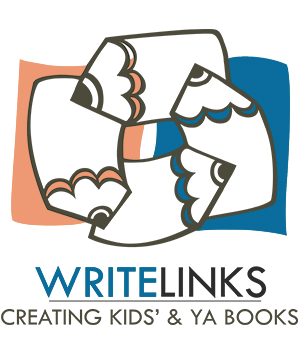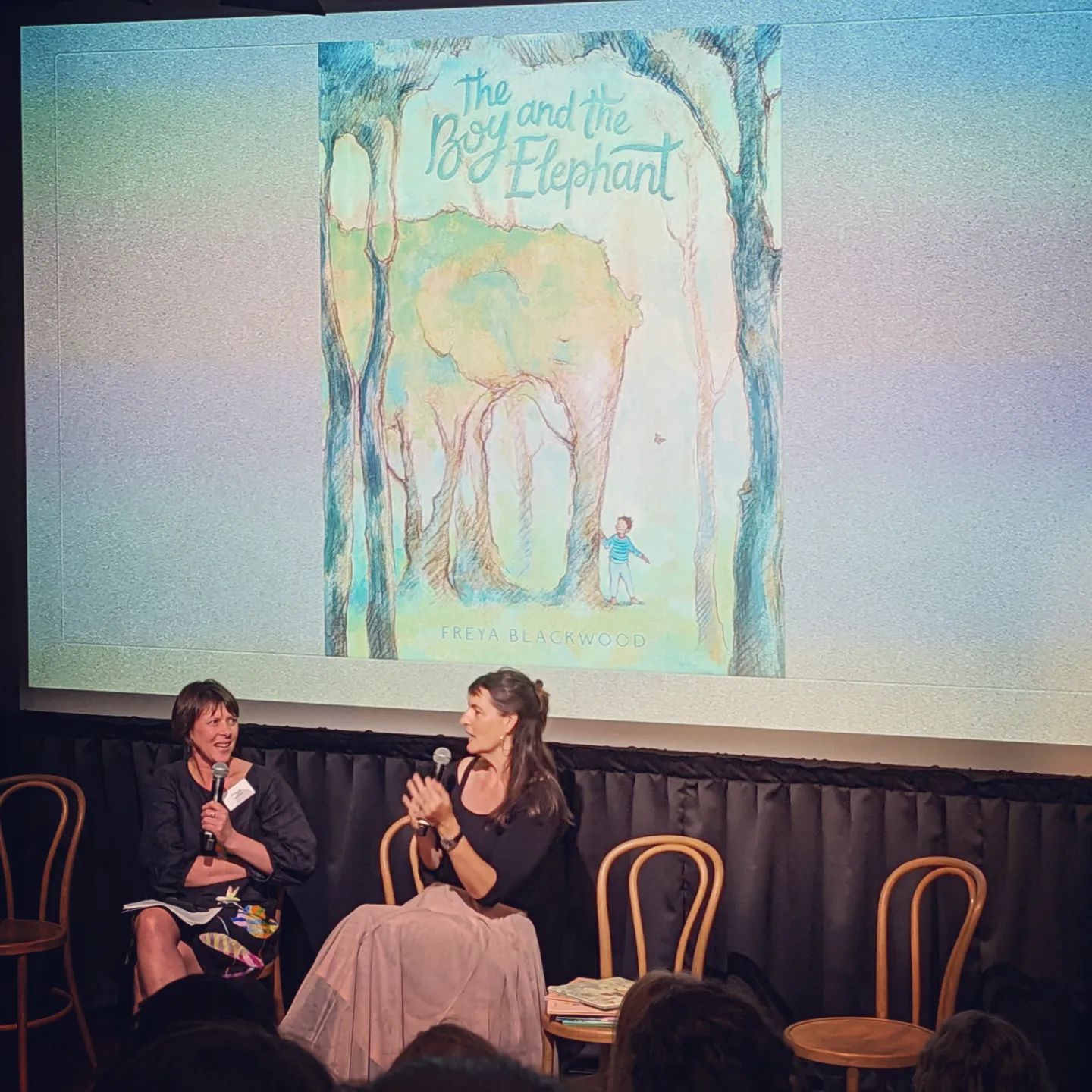
A Conversation between Freya Blackwood and Zanni Louise at BSAB October 2022
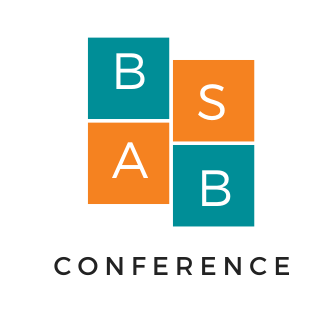 New to the world of picture books, I had the privilege (and it was a privilege) to lean in, along with about 100 others in the auditorium, to a conversation between two gentle and humble giants of the world of picture books: author/illustrator Freya Blackwood and author Zanni Louise. Their respective practical and experiential wisdom was generously shared with those of us in the room, with good will, humility and good humour (there were plenty of giggles). Safe to say, we were all there to connect with our tribe and to fill our cups with some pearls to take away and reflect on; whether novices or well-seasoned professionals in the art of children’s literature.
New to the world of picture books, I had the privilege (and it was a privilege) to lean in, along with about 100 others in the auditorium, to a conversation between two gentle and humble giants of the world of picture books: author/illustrator Freya Blackwood and author Zanni Louise. Their respective practical and experiential wisdom was generously shared with those of us in the room, with good will, humility and good humour (there were plenty of giggles). Safe to say, we were all there to connect with our tribe and to fill our cups with some pearls to take away and reflect on; whether novices or well-seasoned professionals in the art of children’s literature.
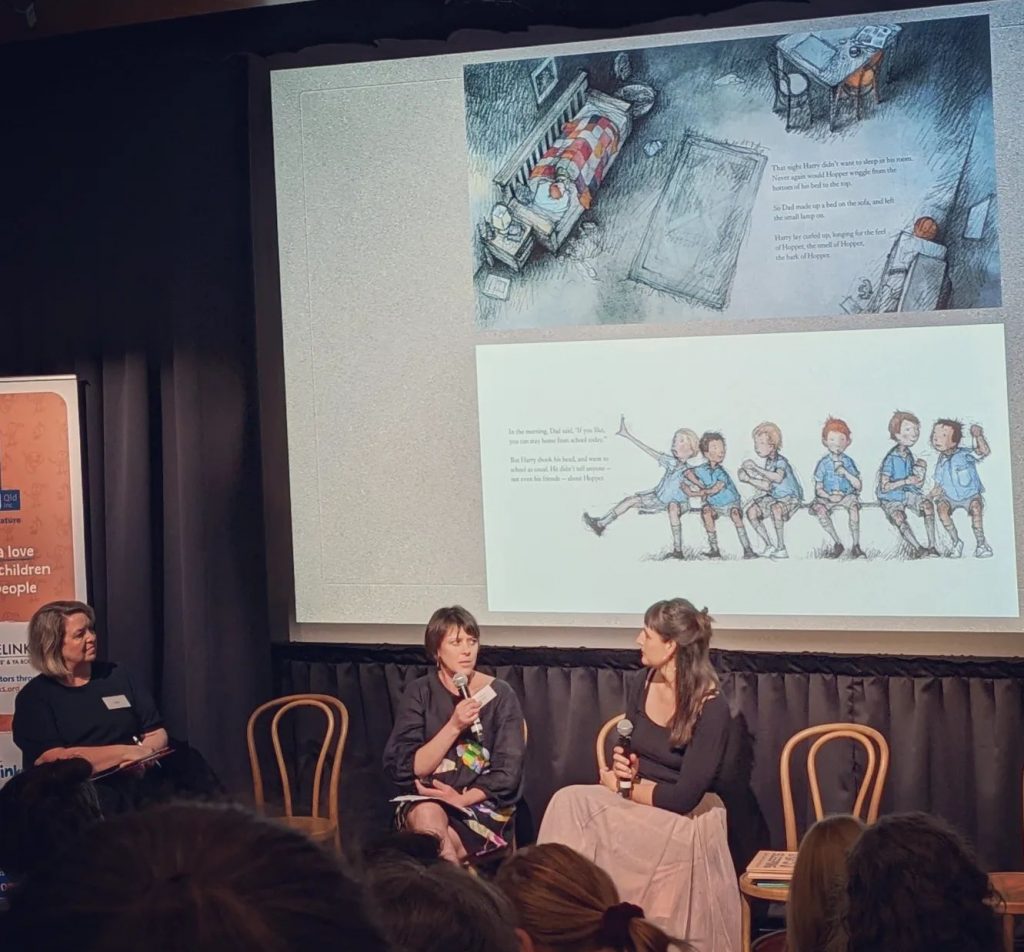
From left to right: Lara Cain Gray, Freya Blackwood & Zanni Louise
That picture book creation is an art, is a point that was appropriately made several times; and the myth would again be debunked that writing and illustrating books that children (and the adults in their lives) will want to read, was easy work. Both presenters have long and noteworthy careers in this space, yet they kept affirming the continuous learning that their respective careers have required. Both presenters have work that has found a place to nest, in The White Raven, the prestigious international children’s catalogue: Freya’s Harry and Hopper (in 2010) and Zanni’s Archie and the Bear (in 2018). The conversation flowed backwards and forwards, as each one answered questions from the other, thus appeasing the curiosity floating above our heads in that room and vying for appeasement.
Freya, whose picture book illustration career began with the publication of Two Summers (Scholastic Press) almost 20 years ago, and who has since illustrated many award-winning books, explained to the writers and aspiring writers in our midst that ‘when you come across a manuscript that’s very well written, it’s a whole lot easier to illustrate’. We were treated to some of the images from her work, including the wordless picture book, The Boy and the Elephant. She went on to say that she had ‘learnt how to accentuate emotional elements within a story’ (for example, using space beside characters to depict isolation). The importance of the need to think laterally was illustrated anecdotally; using the concept of the ‘blanket’ as a metaphor for language in My Two Blankets. Yet, we were reminded that the reader has to also be given room to do their work on the page; and that the illustrator must leave spaces on the page and in the illustrations for this to happen, telling us that even the back of a head can tell so much about how someone’s feeling.
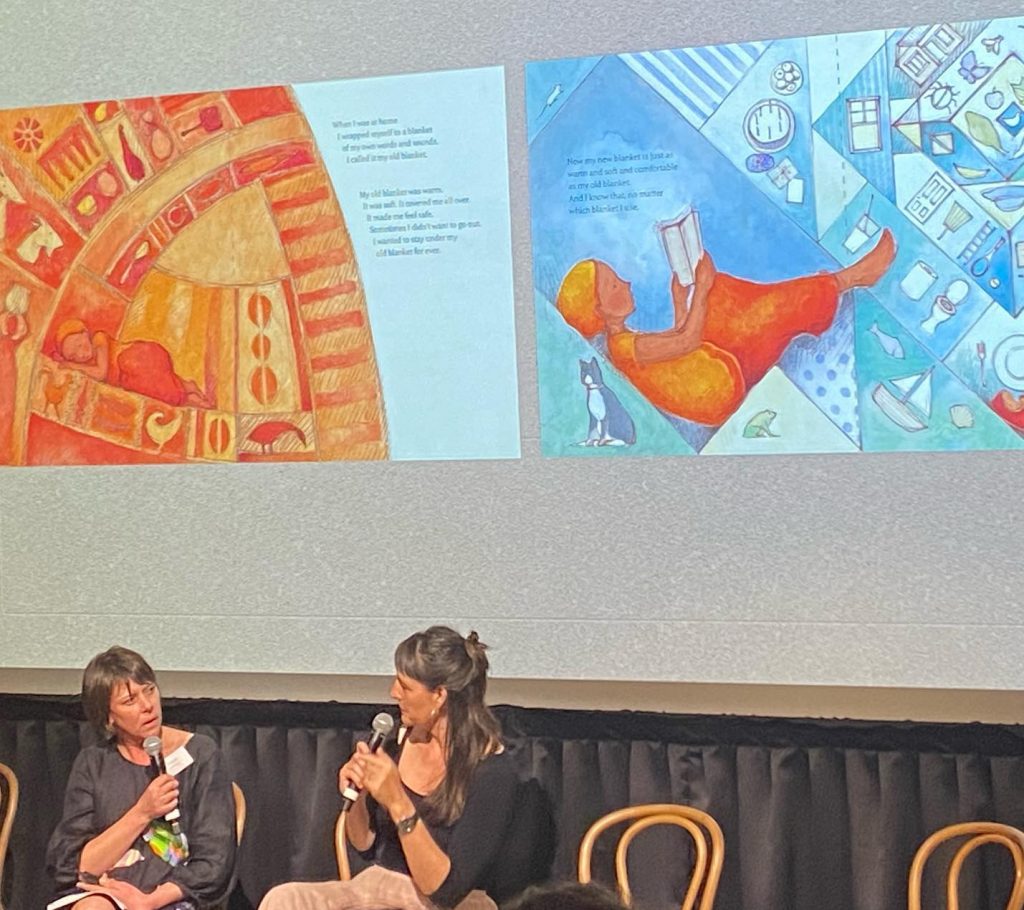
Zanni’s publications and experience go beyond picture books. She agreed that things ‘don’t have to be literal in picture books’ because so much that is really important, ‘happens off the page’. She sees her role as author to ‘put in as little as possible so that the child can have as much room as possible’. She made the point that ‘the child has to realise itself, find the solution itself.’ Her advice on how to do this? Take away adult characters. Pull them back and let the children come to the foreground.
On the topic of illustration notes, Zanni insisted that there be none, except perhaps for end notes. We were reminded that the storyboard for a picture book rarely goes beyond the 32 pages and 500 word limit. When the question was asked about the value of illustration notes in the manuscript, a personal example was used in reply: when submitting her picture book manuscript for Too Busy Sleeping, ‘it was just the words on a page’ that were submitted to her publisher.
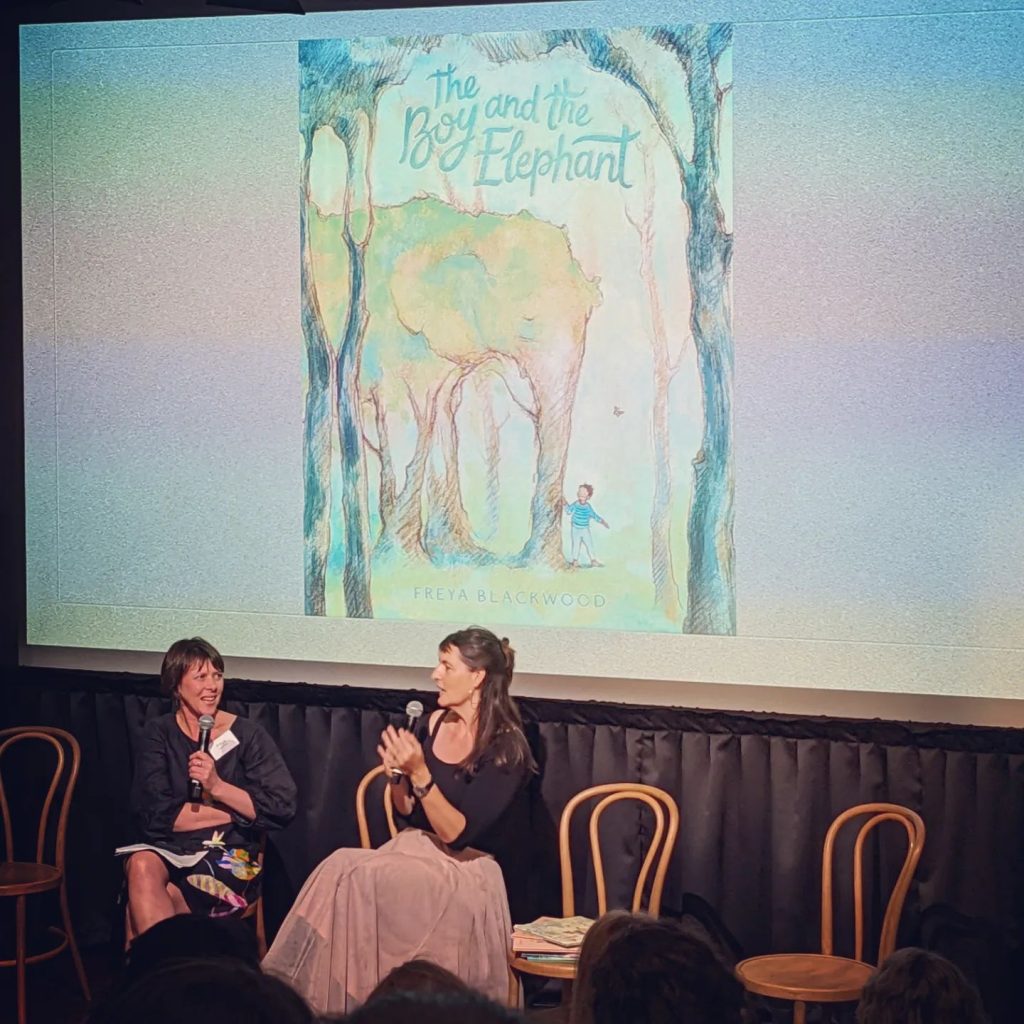
Picture books are almost synonymous with rhyme in the minds of many, yet when the question came up, some very interesting points were made in response. The discussion meandered through the territory of foreign sales, where rhyme becomes complicated or lost in translation. Translation aside, Zanni agreed that while she did use rhyme, it was difficult to write in rhyme and do it well.
The session passed quickly and my shorthand days were over long ago, but I hopefully managed to scribe (umm scribble, barely legibly) enough to take on my own picture book adventures; perhaps the same for you?
Written by Nicki Cassimatis
Nicki Cassimatis is an experienced language and pastoral care teacher, workshop facilitator and published poet. She is a passionate advocate for poetry as a tool for self-care and authentic joy-filled living. She is currently working on her first picture book. Follow Nicki on Facebook at VC Poetry: Poetic Care For the Soul.
Photo credit: Zanni Louise & Annaleise Byrd
Blog coordinator: Sandhya Parappukkaran

